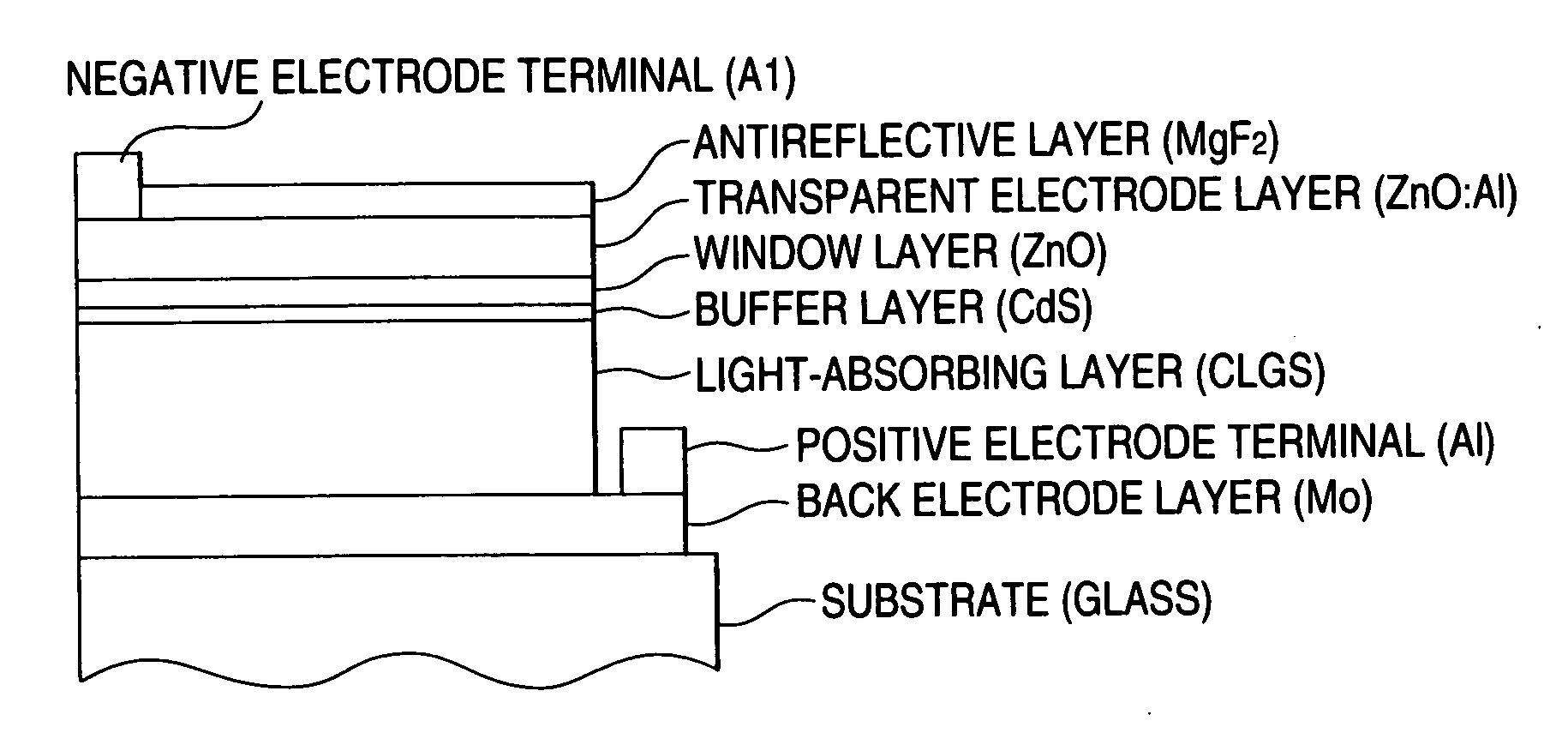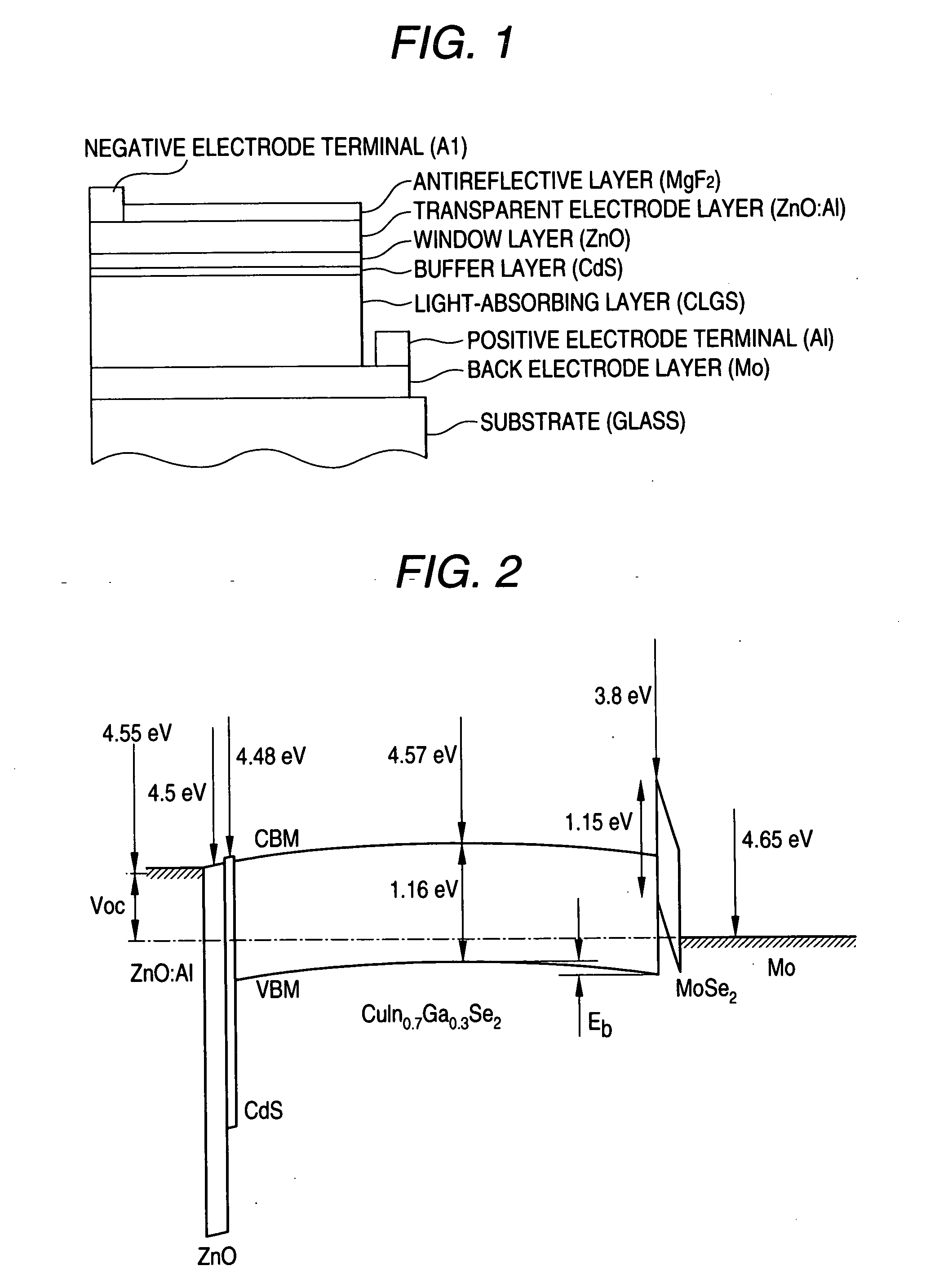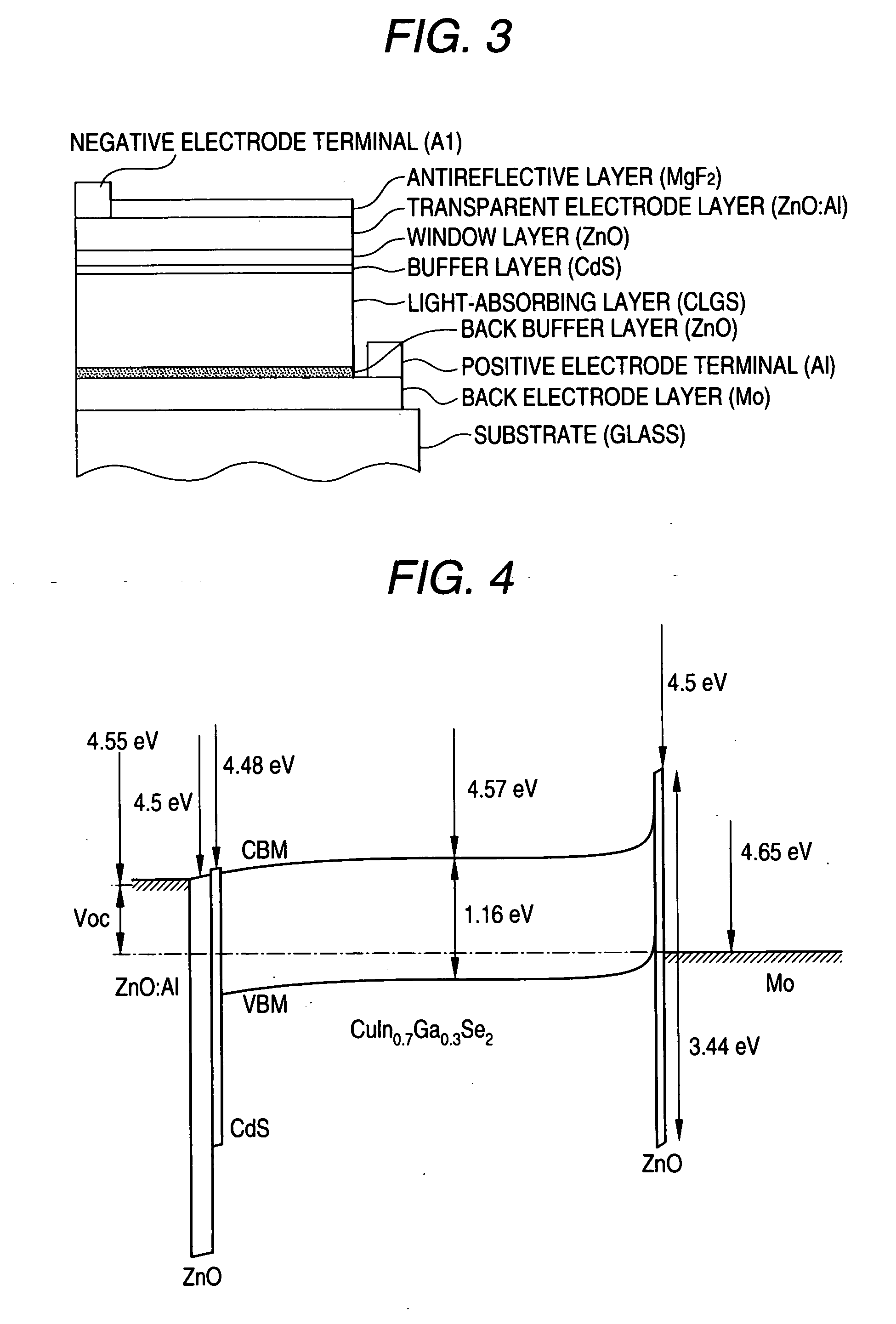Compound solar cell and process for producing the same
- Summary
- Abstract
- Description
- Claims
- Application Information
AI Technical Summary
Benefits of technology
Problems solved by technology
Method used
Image
Examples
examples
[0052] A layer of Mo as a metal to be a collector electrode is attached on the substrate and, before the formation of the CIGS layer, a p-type ZnO or low carrier concentration n-type back buffer layer is deposited. The other processes may be conducted by conventional methods.
[0053] As a deposition method of p-type ZnO, a pulse laser deposition method (PLD) and a sputtering method using a target containing a suitable precursor are preferable but other means such as vapor deposition and chemical vapor deposition may be employed.
[0054] Those effective for adding to the precursor of the p-type ZnO back buffer layer are PmOn including P2O5, KNO3, K3PO4, K4P2O7, K2SO4, KOH, K2O; K2S, K2Se, NH4NO3, (NH4)3PO4, and the like.
[0055] For deposition of n-type ZnO having a low carrier concentration, vapor deposition by simultaneous irradiation of N is most suitable but the other means may be employed.
[0056] The precursors of N are N2, radicals of N2 and N, NmOn (m, n: an integer), NH3, and th...
PUM
 Login to View More
Login to View More Abstract
Description
Claims
Application Information
 Login to View More
Login to View More - R&D
- Intellectual Property
- Life Sciences
- Materials
- Tech Scout
- Unparalleled Data Quality
- Higher Quality Content
- 60% Fewer Hallucinations
Browse by: Latest US Patents, China's latest patents, Technical Efficacy Thesaurus, Application Domain, Technology Topic, Popular Technical Reports.
© 2025 PatSnap. All rights reserved.Legal|Privacy policy|Modern Slavery Act Transparency Statement|Sitemap|About US| Contact US: help@patsnap.com



